BLOGS

By Swetha Parvathy
•
November 18, 2024
Introduction Food labels can be overwhelming, but deciphering them is crucial for making informed choices. Learn what to look for to ensure you're getting the nutrients you need. Label Components 1. Nutrition Facts Panel: Displays serving size, calories, macronutrients, and percentages of daily values. 2. Ingredient List: Lists ingredients in descending order of quantity. 3. Allergen Warning: Identifies potential allergens (e.g., peanuts, gluten). 4. Certifications: Look for USDA Organic, Non-GMO, or Fair Trade. 5. Expiration Date: Ensure product freshness. Key Terms to Understand 1. Organic: Grown without synthetic pesticides, herbicides, or fertilizers. 2. Non-GMO: No genetically modified organisms. 3. Gluten-Free: Suitable for those with gluten intolerance. 4. Low Fat/Reduced Fat: Meets FDA standards for reduced fat content. 5. Natural: Minimal processing, no artificial additives. Red Flags 1. Artificial Preservatives: Extend shelf life, potentially harm health. 2. Added Sugars: Excessive sugar content. 3. Sodium Content: High levels may lead to health issues. 4. Unrecognizable Ingredients: Potential fillers or by-products. 5. Misleading Claims: "Healthy" or "wholesome" labels may be deceptive. Green Flags 1. Whole Food Ingredients: Emphasizes whole grains, fruits, and vegetables. 2. High Fiber Content: Supports digestive health. 3. Probiotics: Promotes gut health. 4. Omega-3 Rich: Supports heart health. 5. Sustainable Sourcing: Environmentally friendly practices. Label Claims Decoded 1. "Low Carb": May still contain added sugars. 2. "Sugar-Free": May contain artificial sweeteners. 3. "Vegetarian": May contain animal by-products. 4. "Heart Healthy": Meets FDA standards for heart-healthy nutrients. Actionable Tips 1. Read beyond the headline: Check ingredients and nutrition facts. 2. Compare labels: Choose products with fewer, more natural ingredients. 3. Check expiration dates: Ensure freshness. 4. Research certifications: Understand what they mean. 5. Consult a healthcare professional: For personalized nutrition advice.
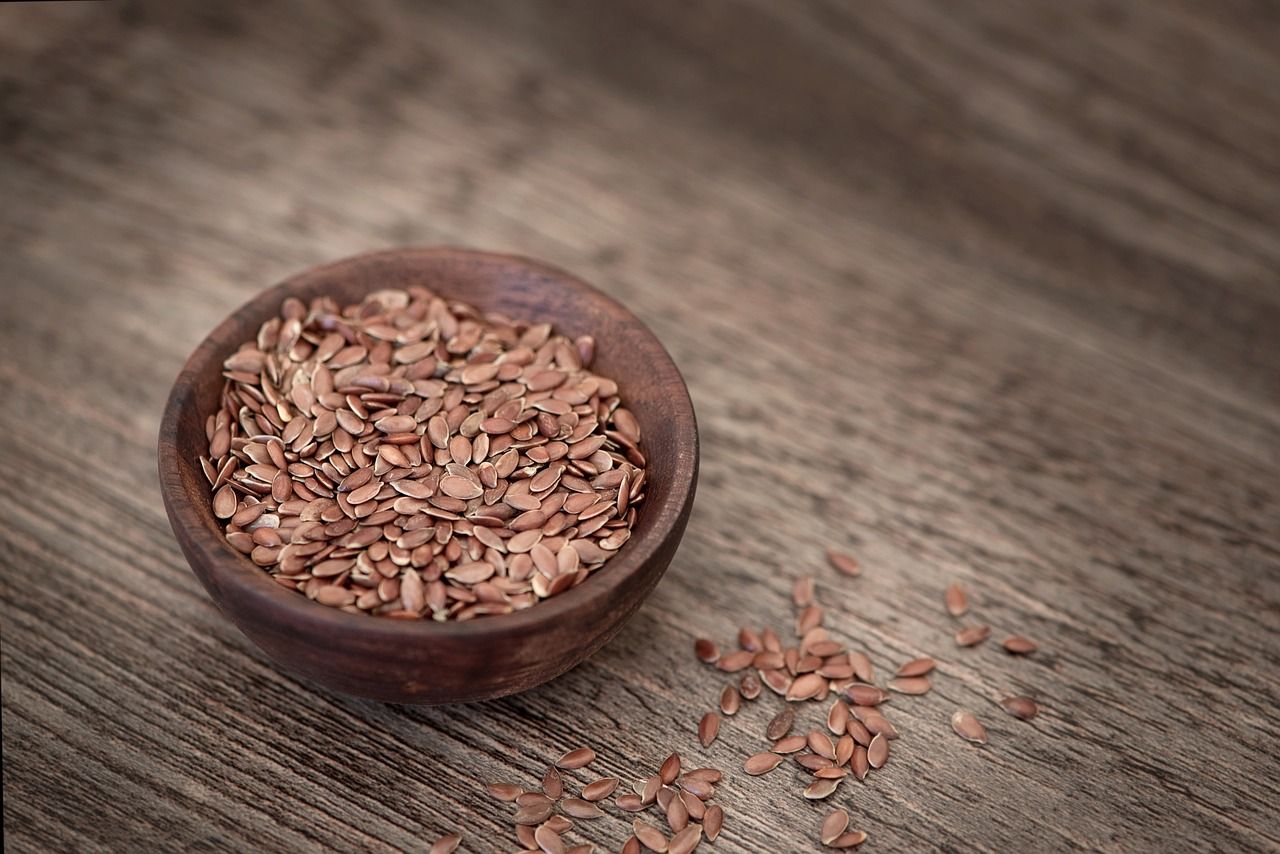
By Swetha Parvathy
•
June 17, 2024
Nutritional Powerhouse Flax seeds are packed with essential nutrients. Just one tablespoon of flax seeds contains: Calories: 37 Fiber: 2 grams Protein: 1.3 grams Omega-3 Fatty Acids: 1,597 mg Vitamin B1: 8% of the RDI Magnesium: 7% of the RDI Rich in Omega-3 Fatty Acids Flax seeds are one of the best plant-based sources of alpha-linolenic acid (ALA), a type of omega-3 fatty acid that promotes heart health and reduces inflammation. High in Dietary Fiber With both soluble and insoluble fiber, flax seeds support digestive health, regulate blood sugar levels, and help maintain a healthy weight by promoting a feeling of fullness. Packed with Lignans Flax seeds contain up to 800 times more lignans than other plant foods. These powerful antioxidants may reduce the risk of cancer and improve overall hormonal balance. Supports Heart Health The combination of omega-3 fatty acids, fiber, and lignans in flax seeds helps lower cholesterol levels and blood pressure, contributing to a healthier heart. Aids in Weight Management The high fiber content in flax seeds can help control appetite and support weight loss efforts by keeping you feeling fuller for longer. Conclusion Incorporating flax seeds into your diet is an easy way to boost your nutrient intake and enjoy a variety of health benefits. Sprinkle them on your yogurt, add them to smoothies, or mix them into your baking for a simple, delicious health boost.
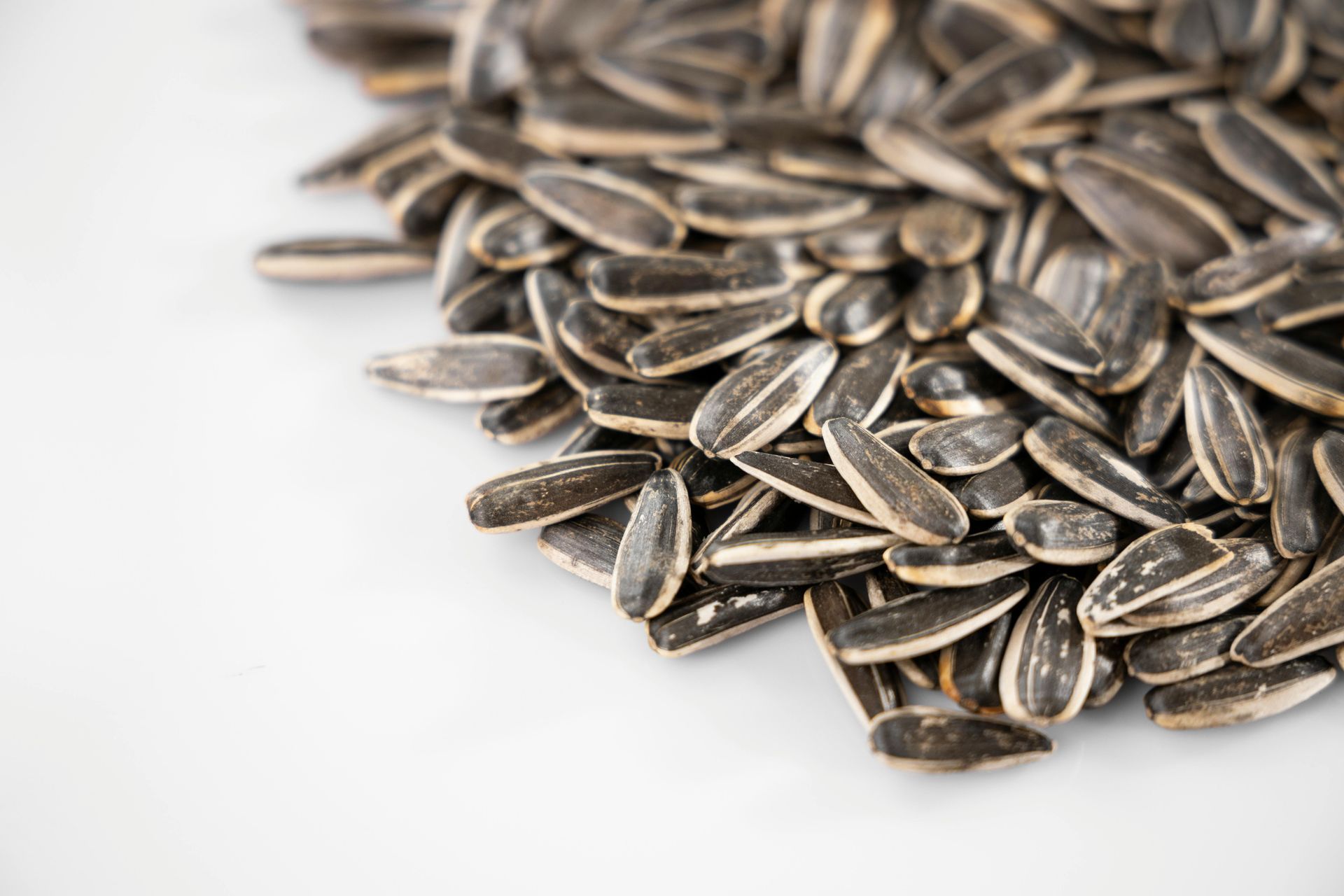
By Swetha Parvathy
•
May 14, 2024
Introduction: Sunflower seeds, the edible seeds harvested from the sunflower plant, have been cherished for their nutritional value and health benefits for centuries. Packed with essential nutrients, these tiny powerhouses offer a multitude of health advantages that contribute to overall well-being. From supporting heart health to promoting healthy skin and hair, sunflower seeds are a versatile and nutritious addition to any diet. Nutritional Facts: Sunflower seeds are rich in nutrients that are vital for maintaining optimal health. A one-ounce serving of sunflower seeds (about 28 grams) provides an impressive array of vitamins, minerals, and antioxidants. Here's a breakdown of the nutritional content found in sunflower seeds: Protein: Sunflower seeds are an excellent source of plant-based protein, making them a valuable addition to vegetarian and vegan diets. Healthy Fats: They contain heart-healthy monounsaturated and polyunsaturated fats, including omega-6 fatty acids, which support cardiovascular health. Fiber: Sunflower seeds are a good source of dietary fiber, aiding digestion and promoting satiety. Vitamin E: These seeds are one of the best natural sources of vitamin E, a potent antioxidant that protects cells from damage caused by free radicals. Minerals: Sunflower seeds are rich in minerals such as magnesium, selenium, copper, and manganese, which are essential for various bodily functions. Health Benefits: Heart Health: The combination of healthy fats, fiber, and antioxidants in sunflower seeds helps lower cholesterol levels, reduce inflammation, and support overall heart health. Improved Digestion: The high fiber content in sunflower seeds promotes digestive regularity and helps prevent constipation. Brain Health: Vitamin E, found abundantly in sunflower seeds, has been linked to improved cognitive function and reduced risk of age-related cognitive decline. Skin and Hair Health: The antioxidants in sunflower seeds, particularly vitamin E, help protect the skin from sun damage and promote healthy hair growth. Bone Health: Sunflower seeds are a good source of magnesium, a mineral essential for bone health and strength. Regular consumption may help reduce the risk of osteoporosis. Blood Sugar Control: The fiber and healthy fats in sunflower seeds contribute to steady blood sugar levels, making them a suitable snack option for individuals with diabetes. How to Use Sunflower Seeds: Sunflower seeds can be enjoyed in various ways, adding flavor, texture, and nutrition to a wide range of dishes. Here are some creative ways to incorporate sunflower seeds into your diet: Snacking: Enjoy sunflower seeds as a crunchy and satisfying snack on their own or mixed with nuts and dried fruits. Salads: Sprinkle toasted sunflower seeds on salads for added crunch and nutrition. They pair well with leafy greens, vegetables, and fruits. Baking: Add sunflower seeds to bread, muffin, and cookie recipes for a nutritious twist. They can also be used as a topping for homemade granola bars. Smoothies: Blend sunflower seeds into smoothies for a creamy texture and extra protein boost. Combine them with fruits, yogurt, and leafy greens for a nutritious beverage. Trail Mix: Create your own trail mix by combining sunflower seeds with nuts, seeds, dried fruits, and a sprinkle of dark chocolate chips for a satisfying snack on the go. Conclusion: Incorporating sunflower seeds into your diet is an easy and delicious way to reap their numerous health benefits. Whether enjoyed as a snack, added to salads, or used in baking, these nutrient-rich seeds offer a convenient way to support overall health and well-being. So, elevate your meals and snacks with the goodness of sunflower seeds and enjoy a healthier, happier you.

By Gokulram M
•
March 26, 2024
Foods that are organic are growing in popularity. Have you ever wondered how organic and non-organic foods differ from one another? There are several reasons why people select organic food. Explore the world of organic foods by reading on. What distinguishes foods that are organic from those that are not? The method of production is what separates organic food from non-organic (conventional) food. Organic foods, such as fruits, vegetables, eggs, milk, and meat, are produced without: Fertilizers, herbicides, and pesticides that are synthetic (produced by humans). Farmers that produce organic food are permitted to use natural pesticides. Creatures with altered genetic makeup (GMOs) Either growth hormones or antibiotics Ionizing radiation, often known as radiation, is a method of preserving food using radiation energy. Certain organic farming techniques may also be used by non-organic farmers. Because organic foods have less pesticide residue, are they safer to eat? Health Canada states that there is no proof that eating organic food is safer than eating food cultivated conventionally due to pesticide residue. In organic food production, natural or plant-based insecticides may still be used. Do organic foods have more nutrients? To conclude, organic foods are nutrient-dense than non-organic foods would be premature. Whether they are produced organically or not, foods including fruits, vegetables, whole grains, legumes, eggs, lean meats, and dairy products are all nutrient dense. Do foods that are organic taste better? Some individuals might think that because organic food is grown locally, it tastes better because it is fresher. Is food that is organic more costly? Food that is organic may generally be more expensive than non-organic food. This is because, compared to conventional farming, organic farming typically delivers lower yields and involves more effort. What role may a nutritionist play? Dietitians can guide you through the process of reading food labels and educate you on what to look for when selecting wholesome foods. Dietitians are knowledgeable in nutrition science and will consider your specific demands based on your goals, culture, eating customs, and your health. Speak with a dietician right now! Conclusion Consuming organic food is a matter of preference. There are various reasons why people select organic food. You can still consume a healthy diet regardless of whether you select organic or non-organic food.

By Gokulram M
•
December 7, 2023
The most popular vegetable oil in the world is palm oil. Currently, over 60% of all packaged goods in supermarkets include it. It's important in the making of many products, like cookies, because it makes them incredibly crunchy and crispy. Furthermore, a crucial component of margarine that gives it a smooth, spreadable consistency is palm oil. The fruits of the oil palm tree, Elaeis Guineensis, are used to extract palm oil. In the areas surrounding the equator, oil palm trees thrive. The tropical oil palm tree has leaves that are roughly five meters long. The tree's greatest loves are the sun and dampness. It needs constant sunshine, temperatures between 24 and 32 degrees Celsius, and a year-round supply of precipitation. What is the origin of palm oil? The oil palm trees start to produce palm fruit in bunches when they are three or four years old. All year long, the fruit bunches are collected. There are hundreds of palm fruits in each cluster. Large olives are roughly the size of palm fruits. The fruit's orange pulp is used to extract the oil. About 30–35 percent palm oil is present in each palm fruit. The single seed, or kernel, found in the fruit is what's used to make palm kernel oil. Where does palm oil grow? Ten degrees north or south of the equator is where the best places to cultivate are found. The oil palm tree was first discovered in West Africa, but it is currently mostly grown in Indonesia and Malaysia, the two countries that produce the most palm oil worldwide. Eighty-five percent of the palm oil used worldwide comes from Indonesia and Malaysia. Other than Indonesia and Malaysia, palm oil production is rising in Western Africa, South and Central America, Thailand, and other regions of the world. Why is palm oil used by us? Forty kilograms of oil are produced annually by one palm tree. The International Union for Conservation of Nature (IUCN) asserts that palm oil is critical to both economic growth and global food security. More than seven million plantation workers, smallholders, and their families are employed in and supported by the palm oil industry, according to the Roundtable on Sustainable Palm Oil. Production of palm oil is a significant use of natural resources in these economically challenged regions of the world. The drawbacks of palm oil Unsustainable farming methods used on a variety of crops, such the production of palm oil, can endanger species and cause deforestation and climate change. They may also weaken workers' rights and cause disagreements about who owns the land. But in the middle of these profoundly detrimental effects, sustainable palm oil production stands out as an essential part of the answer. Sustainable Palm Oil Production as a Fix About one-third of all vegetable oils consumed worldwide are made from palm oil, which requires only 10% of the agricultural area meant for oil production. When compared to other crops, the yield per hectare of oil palm is exceptionally high. It is difficult to substitute other oils for palm oil without sacrificing quality because of its great productivity and versatility. Therefore, the greatest substitute for conventional palm oil is palm oil produced sustainably. The RSPO Principles and Criteria serve as a standard for sustainable palm oil produced by RSPO. In this manner, it is possible to ensure palm oil trading and production is sustainable. Conclusion The consumption of palm oil is rising globally. It's a very contentious dish, though. On the one hand, there are a number of health benefits mentioned. However, there could be hazards to heart health. The continual expansion in its manufacturing raises additional environmental issues. This article examines the impacts of palm oil on sustainability and the environment.
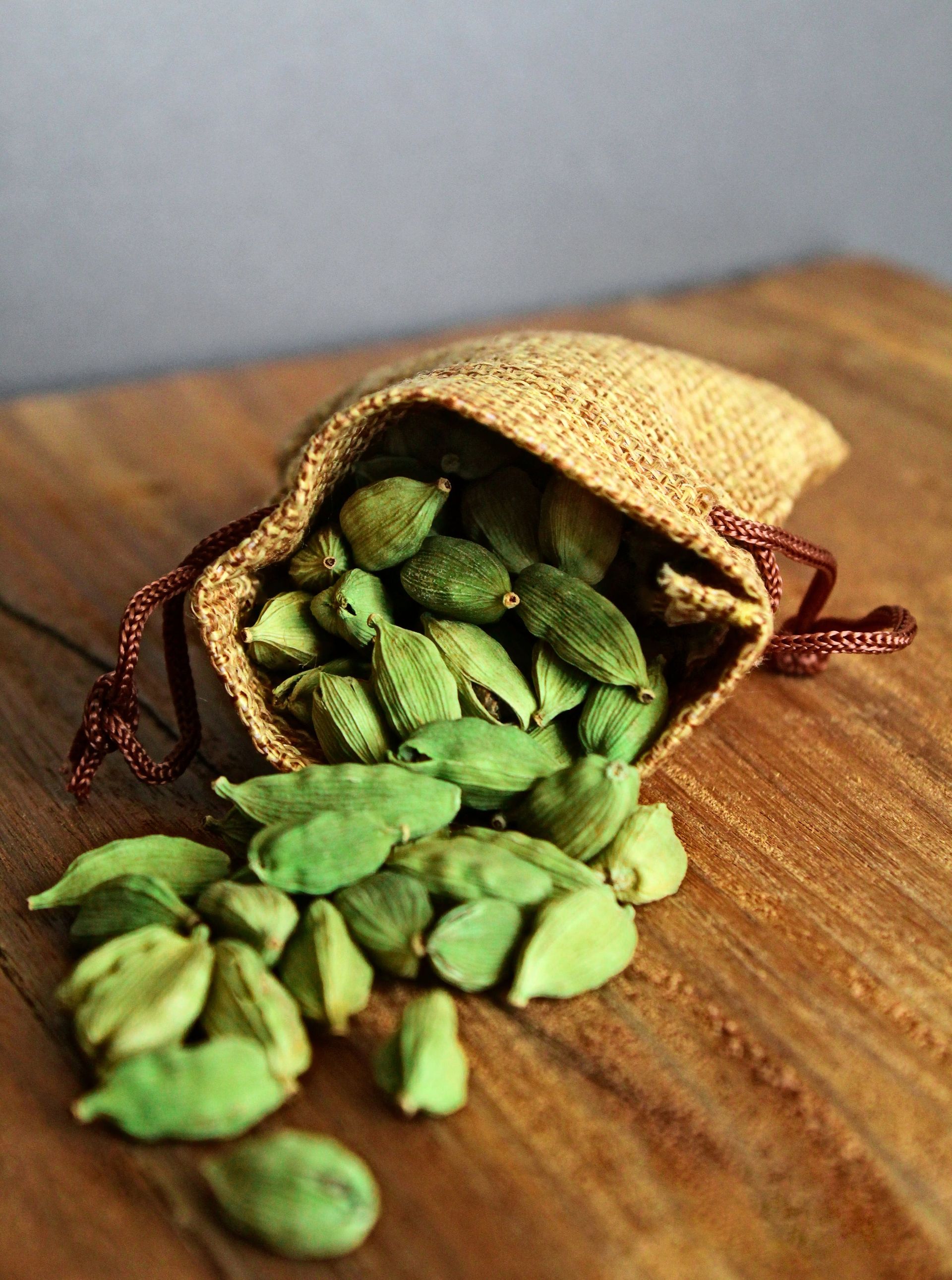
By Gokulram M
•
November 9, 2023
This unusual spice has a wealth of nutrients that will nourish your body. For more than 5,000 years, cardamom has been a widely used medicinal plant by healers. There are three types of cardamom; however, green cardamom is the most widely used type for both culinary and medical purposes. It has significant concentrations of vitamin A, vitamin C, and other micronutrients, as we have described. Cardamom has many health advantages due to the combination of these vitamins and minerals. A selection of them will be covered in the section below: 1. Potential Antioxidant Benefits to Lower High Blood Pressure Because of its diuretic properties, cardamom is believed to help control high blood pressure when taken regularly. Because of its high antioxidant content, it encourages frequent urination, which aids in blood detoxification and the removal of water that has accumulated around vital organs. A study that was published in the Indian Journal of Biochemistry and Biophysics goes into detail on the benefits of cardamom use on a regular basis and how it helps to regulate blood pressure. Additionally, among patients with stage 1 hypertension, the study found a decrease in the diastolic, or heart-resting, blood pressure, as well as the systolic, or heart-beating, blood pressure. 2. Treats Digestive Disorders Cardamom helps with appropriate digestion, which is why Indians use it in practically every recipe. Cardamom has a reputation for being a carminative and digestive stimulant. Menthone, an essential oil found in this spice, helps treat digestive issues such as acid reflux, stomach ulcers, and other issues. Its anti-inflammatory qualities reduce nausea and even lessen the burning feeling in the stomach. It's still used by some folks to lessen motion sickness. 3. Combats Adverse Bacteria A traditional home treatment for freshening breath is cardamom. Regular consumption of this rich source of antioxidants and other antibacterial characteristics will keep your mouth healthy. Cineole, a cardamom oil noted for its antibacterial qualities, is present in the spice. It improves dental health by eliminating the harmful germs that are present on the tongue and palate. Chewing cardamom seeds is a well-known way to maintain a pH balance in the mouth, thus averting gum disease and severe dental caries. 4. Calms You Because of its antioxidant content, cardamom has a calming impact on people. Additionally, it prevents cortisol from building up in your body, which lowers stress and encourages relaxed breathing. Because cardamom is invigorating, inhaling its essential oil or chewing a piece of it helps relieve stress. Cardamom is also a prominent element in aromatherapy and has helped to increase the airflow to the lungs, therefore supplying more oxygen to the body, while being regarded premature in comparison to other evidence-based science. It is thought to support physiological reactions during physical activity. 5. Recuperation After Surgery The hours following surgery are difficult and characterized by anesthesia-induced confusion and dizziness. However, this typically relies on the body's makeup and the level of anesthetic. Ginger, lemon, and lavender mixed with cardamom and essential oils might help you feel calmer, battle nausea, and clear your mind when you're awake. 6. Calms and Diminishes Inflammation To facilitate easier breathing, cardamom also aids in sinus cleansing. Because of its antioxidants, cardamom may help reduce swelling, germs, or infections if you have a type of respiratory inflammation. Additionally, it guards against cellular damage and stops inflammation, both of which can result in chronic illnesses. Consequently, it can be regarded as a calming substance that is rich in anti-inflammatory elements. 7. Addresses Respiratory Conditions The spice has a component called cineole that functions as an antibacterial to prevent lung infections caused by bacteria. Black cardamom enhances respiratory well-being. Cardamom can be used in conjunction with prescription medication to lessen wheeze and asthma. To facilitate easier breathing, it aids in clearing the chest and nasal passages of mucus. It contains flavonoids, which assist your lungs relax so you can breathe deeply and for longer periods of time, improving your intake of oxygen. 8. Advantages of Cardamom for Skin and Hair Clear Skin: Cardamom is a wonder for skin that breaks out easily. It removes imperfections and stops outbreaks. It unclogs all clogged pores and regulates sebum flow. Its anti-inflammatory components help to soothe and balance out skin inflammation. Softer Lips: Thanks to the antioxidants in cardamom, chapped lips are no longer an issue. Lip balms contain cardamom essential oils to soothe the lips and give aroma. Conclusion An age-old cure, cardamom may provide numerous health benefits. It might help with weight loss, breathing, and lowering blood pressure. Moreover, research on animals and in test tubes suggests that cardamom may help prevent cancer, reduce anxiety, eliminate infections, and shield the liver, however the proof for these claims is less. However, incorporating cardamom into your food may be a secure and efficient approach to enhance your well-being.

By Gokulram M
•
October 25, 2023
Cinnamon, a common cooking spice, was historically used as payment. The spice is well-liked for cooking because of its pleasant flavor and cozy aroma, especially in curries and sweet baked goods. Cinnamon sticks are made from the inner bark of a small evergreen tree, which is peeled and dried in the sun until it curls into rolls. Powdered cinnamon is additionally offered. What is cinnamon's main health advantages? 1. It contains antioxidant qualities. Cinnamon, like other spices, includes plant substances called polyphenols that act as antioxidants and protective agents. These substances are what provide cinnamon with many of its health advantages and promote its use as a preservative in food preparation. 2. It is anti-inflammatory. These same antioxidant substances also aid in the anti-inflammatory properties of cinnamon. This may be advantageous as we age because chronic inflammation plays a significant role in the development of many age-related disorders. 3. It fights off bacteria and fungus. Cinnamon is commonly employed in Chinese herbal medicine since it is believed to have numerous therapeutic and calming effects. The cinnamaldehyde-containing essential oils in cinnamon bark are what give it its characteristic flavor and aroma. It seems that cinnamon aldehyde can help prevent bacterial and fungal infections. 4. It might possess antiviral qualities. According to certain studies, cinnamon may also offer protection against some viruses, such as the influenza virus and the virus that causes Dengue fever in mosquitoes. 5. It could decrease the risk of type 2 diabetes and lower blood sugar. Blood sugar is said to be better controlled when cinnamon is consumed. It seems to accomplish this through a variety of processes, one of which is controlling the quantity of glucose that is absorbed into the blood. Cinnamon may have a mild effect on decreasing fasting blood sugar levels in diabetics with poor blood sugar management, according to promising human research. 6. It could increase insulin sensitivity. Insulin is a key hormone in controlling our metabolism and energy levels because it helps move blood sugar from our blood to the cells where it is needed. Age-related insulin resistance has the potential to alter the normal balance of blood sugar and eventually result in type 2 diabetes. While additional research is required, it does seem that cinnamon extracts mirror the effects of insulin and may lower the chance of developing insulin resistance. 7. It might be advantageous for the aged brain. As we become older, conditions like Alzheimer's become more prevalent and are typically brought on by the increasing degeneration of brain cells. The buildup of protein fragments in the brain causes Alzheimer's, which slows down thinking and memory. Two substances found in cinnamon seem to prevent the accumulation of these proteins. There is still a lot we don't know about how this effect can help us as a lot of this data comes from studies on animals and in test tubes. 8. It might support blood pressure control There is some evidence to support the notion that regular cinnamon eating is linked to a temporary drop in blood pressure. Even if the data is promising, more long-term randomized controlled studies are required as it is still early in the process. 9. It might fend against heart disease Frequent use of cinnamon may help lower blood pressure, but it also seems to have a beneficial effect on lowering blood triglycerides and cholesterol levels, which are two other cardiovascular risk factors. 10. It might promote intestinal health Cinnamon is one of the spices that has prebiotic qualities. Eating them frequently may improve digestive health, ease digestive problems, and assist your gut's bacterial equilibrium be restored. 11. It might offer cancer prevention. While research on animals and test tubes has provided the majority of the evidence to date, extracts from cinnamon may offer some cancer prevention. In this sense, the spice seems to be helpful in stopping the growth of cancer cells, preventing blood vessels from forming in tumors, and eliminating cancer cells. 12. It might encourage good oral hygiene Cinnamon has long been used as a tooth powder to relieve toothaches and other dental issues like bad breath and bacterial overgrowth. Conclusion There are several reasons for using warm cinnamon in your diet. Because of its strong antioxidant content, it may help fend off illness, inflammation, and aging. Additionally, it might enhance oral hygiene, lower blood pressure, lower cholesterol, and improve gut health.
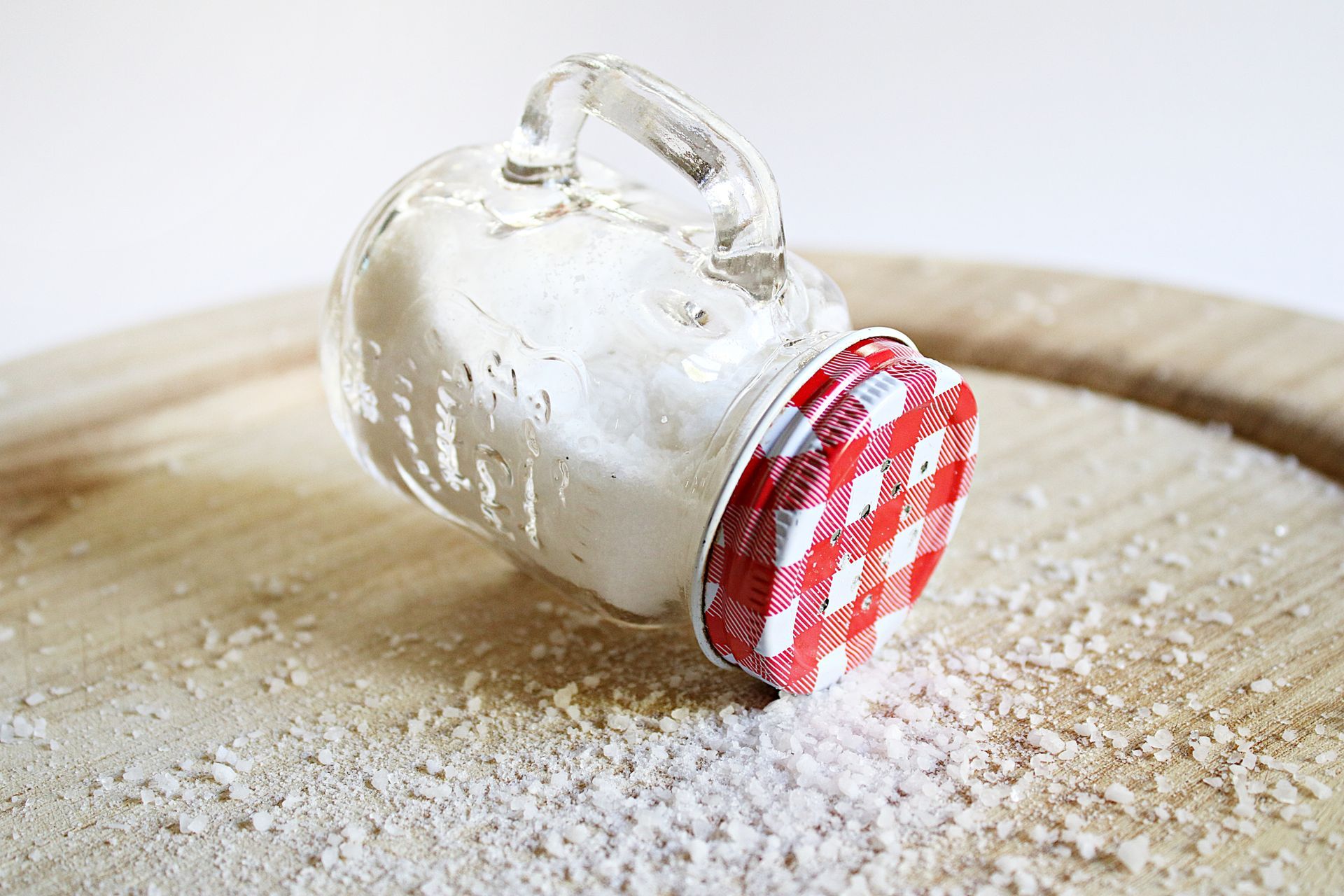
By Gokulram M
•
August 24, 2023
One of the most often utilized elements in practically all foods is salt. You take salt daily. It is nicknamed "common salt" for this reason. But how scientifically sound is this ingredient? How does salt become made? What varieties of salts are there? Learn more about salts now. What exactly are salts? Ionic compounds known as salts are composed of two groups of positively charged (H+) and negatively charged (OH-) ions. When bases and acids are mixed in an equal amount, salt is created in chemistry. whereas sea water inherently contains salt. Neutralization is the process by which acids and bases react with one another to produce salt and water. NaCl is the chemical formula for table salt. Sodium chloride is referred to as NaCl. There are numerous applications for salt. For instance, salt is utilized in the preparation of toothpaste, plastic, soaps, bleaches, and other products. Salt has a pH of 7, which indicates that it has a neutral nature and is neither acidic nor basic. Features of Salt Chlorine and sodium combine to form salt. Both negatively charged (OH-) and positively charged (H+) ions can be found in salt. Ion bonds are electrostatic forces of attraction between ions that are attracted to one another due to their oppositely charged ions. The ionic compounds are neutral with no charge when they contain an equal number of opposite charges. A good conductor of electricity is salt water. Because ions are present in salts, they have an ionic character. They are solids that are hard, crystalline, and brittle. Salt has a salty flavor and is white and odorless. Water (H2O) is soluble in all potassium (K), ammonium (NH4+), and sodium (Na) salts. Water can dissolve nitrates, nitrites, and bicarbonates. Water is insoluble for all metallic oxides, metallic carbonates, hydroxides, phosphates, and sulfides. Various Salts The various varieties of salt include the following: Normal salt Electrical neutrality exists in typical salts. These salts, which lack replacement hydrogen or hydroxyl, are created when acids and bases neutralize. Hydrogen ions are entirely swapped out for metallic ions. NaCl, KNO3, CuSO4, etc., as examples. Basic salt Salt is created when the hydroxy radicals of a diacidic base or a triadic base are partially replaced by an acid radical. This type of acid is composed of an acid anion, metallic cation, and hydroxyl. For instance, basic magnesium chloride, basic zinc chloride, ZnOHCL, etc. Acidic salt The salt that results when a polybasic acid is partially neutralized by a base is acidic. In other words, this salt is created by only partially replacing the acidic hydrogen in polybasic acid with a metal. NaHSO4, NaHS, NaHCO3, etc., as examples. Double salt Multiple cations or anions are present in double salts. They are a type of crystalline salt with a different crystal structure from either of the other two simple salts they are composed of. Bromlite, potassium sodium tartrate, aluminum Sul acetate, etc. are a few examples. Mixed salt A salt that contains more than one basic or acid is known as a mixed salt. For instance, bleaching powder, sodium potassium sulphate, etc. Complex salt Simple salts are combined to form a saturated solution, and the solution then crystallizes, much like double salts. For instance, potassium mercuric iodide, sodium silver cyanide, etc. Conclusion Everyone in the world uses salt, which is an essential mineral for human life. You can learn more about the salt in this, including its characteristics and variants.

By Gokulram M
•
July 10, 2023
We'll look at the benefits for both our health and the environment in this blog. Understanding Wood Pressed Oils: Using wooden presses, which has been a common practice for millennia, oilseeds or nuts are crushed to produce wood pressed oils. To extract the oil using this process, the seeds or nuts are ground into a paste and put under pressure. Wood pressing preserves the inherent nutrients, flavors, and fragrances of the source material in contrast to contemporary commercial processes that use heat and chemicals. Superiority in nutrition: Oils that have been wood-pressed are recognized for being nutrient-dense. The vital fatty acids, vitamins, minerals, and antioxidants included in the oils are retained due to the absence of high heat or chemical solvents used in the extraction process. These oils are a healthier option to refined oils since they frequently have higher concentrations of nutrients including Vitamin E, Omega-3 fatty acids, and polyphenols. Benefits for the Heart: Wood pressed oils with a good fatty acid composition include sesame oil and groundnut oil. Antioxidants and the inclusion of monounsaturated and polyunsaturated fats can help lower blood pressure, lower bad cholesterol levels, and improve cardiovascular health in general. Unadulterated Purity: The purity of wood-pressed oils is one of its major benefits. These oils often don't contain the preservatives, artificial flavors, and additives that are present in refined oils. They are frequently cold pressed to preserve the oil's quality and prevent the contamination of the finished product with chemical residues. Oils are traditionally extracted from a variety of oilseeds and nuts using wooden presses. This method produces high-quality oils with a wide range of advantages since it preserves the original flavors, smells, and nutrients of the parent material. Let's examine some of the well-known wood-pressed oils and their distinctive qualities in more detail. 1. Wood Pressed Sesame Oil Wood-pressed sesame oil is prized for its robust flavor and remarkable nutritional profile. It is a good source of omega-3 fatty acids and other mono- and polyunsaturated fats, which support heart health. Sesamol and sesamin, two antioxidants found in wood pressed sesame oil, have anti-inflammatory and anticancer potential. It is a preferred ingredient for marinades, stir-fries, and sauces due to its nutty flavor and scent. 2. Wood-pressed groundnut oil Groundnut oil that has been wood-pressed is made from peanuts and has a flavour all its own. It has a lot of monounsaturated fats, which cut blood levels of harmful cholesterol and lower the risk of heart disease. Vitamin E, an antioxidant that shields the body's cells from harm by free radicals, is another important component of this oil. The high smoke point of wood pressed groundnut oil makes it perfect for baking, sautéing, and deep frying. 3. Wood-pressed coconut oil Fresh coconut flavor is preserved in coconut oil obtained by wood pressing. It has a silky texture and a mild, nutty flavor. Medium-chain triglycerides (MCTs), which are readily metabolized by the body into energy, are abundant in wood-pressed coconut oil. Additionally, it has antifungal and antimicrobial qualities. This multipurpose oil can be used for spreading, baking, cooking, and even as a natural moisturizer for the skin and hair. 4. Wood-pressed mustard oil Indian and Southeast Asian cuisines frequently use mustard oil that has been produced through wood pressing. It is full of monounsaturated and polyunsaturated fats and has a strong, robust flavor. Compounds including glucosinolates, which have antibacterial and antifungal properties, are found in wood-pressed mustard oil. It is frequently employed in deep-frying, pickling, and classic Indian meals including curries and stir-fries. Conclusion The elegance of conventional extraction techniques and their countless advantages for human health and the environment are demonstrated by wood-pressed oils. By using wood-pressed oils, we support sustainable practices and appreciate the goodness of nature. By incorporating these oils into our daily routines, we may take advantage of their higher nutritional value, taste their distinctive flavors, and start along the path to better living.
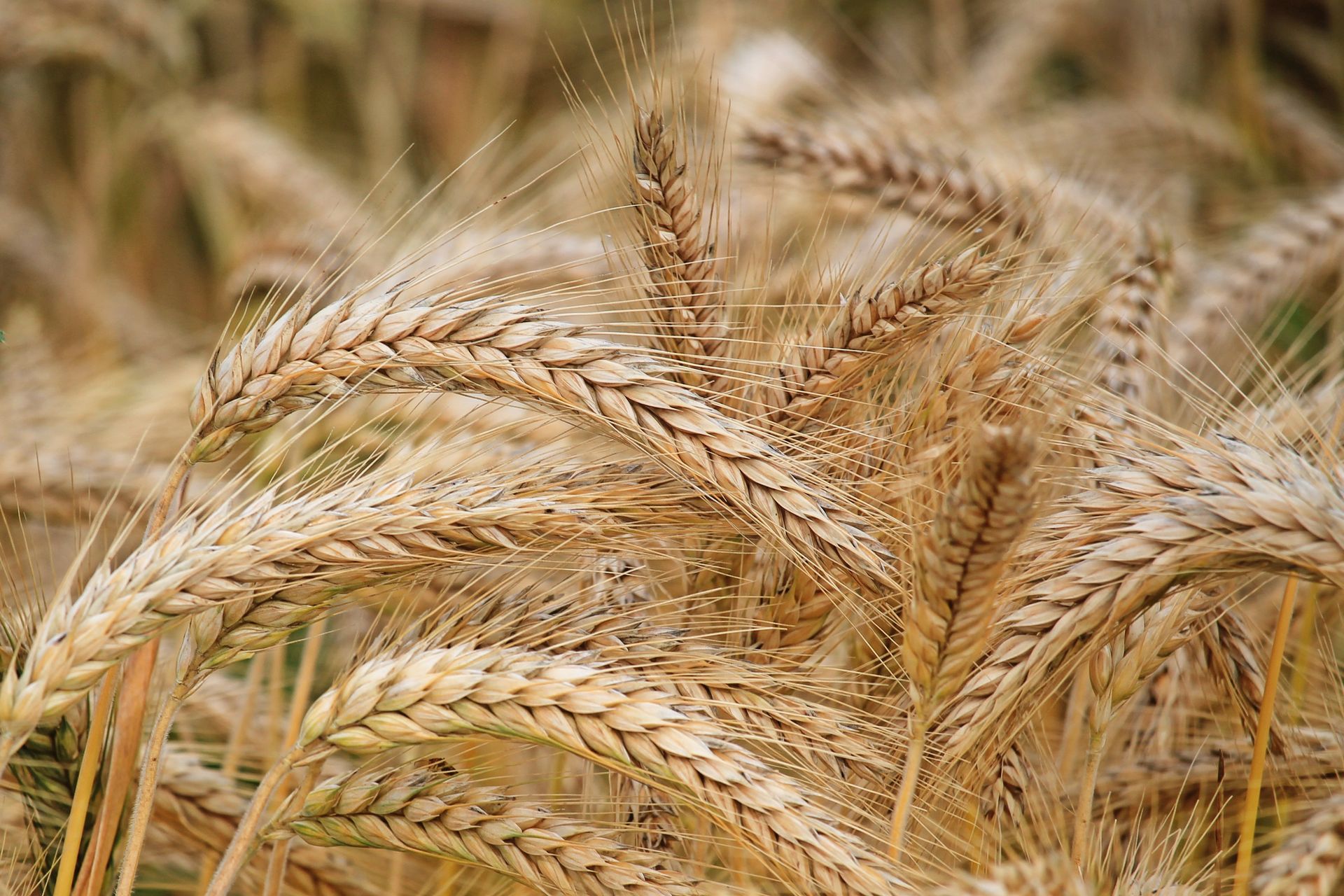
By Gokulram M
•
June 19, 2023
The type of wheat used determines how the flour is used. All varieties of wheat flour are made by milling wheat kernels into flour. But not all wheat kernels are created equal. Seven different species and about 20 different wheat types are cultivated globally. Hardness To ensure that the wheat grains break into smaller pieces, they are put under a lot of pressure during the milling process. Some wheat cultivars are very hard to break and exceedingly tough. Some are softer than others, which makes them simpler to break and, thus, grind. If it is more difficult to crack the wheat kernel, the starch granules inside are more likely to be harmed. Damaged starch can absorb water more readily than unharmed starch. For bread, this would be ideal, but not so much for cakes. Because of this, cakes usually employ softer flour whereas breads benefit from using firmer flour. Gluten Content Because it affects the product's texture, density, and final composition, gluten must be included in the production of any flour-based product. A naturally occurring protein called gluten can be found in grains like wheat, barley, and rye. It serves as a binder, holding the meal together and giving it a "stretchy" appearance. Cake, all-purpose, or pastry flours are used for cakes and other baked items that don't require gluten. This allows them to be denser and less elastic so that they can keep their shape without stretching. Whether they are leavened or not, breads need gluten to create that slightly elastic, fluffy, or layered texture. To create chapati, a lot of gluten is needed. The more gluten a product has, the better it will be. Protein Content If you want to produce wonderful, fluffy bread or pasta, you need wheat flour with a high protein level. The proteins in gluten allow the dough to be tugged and stretched. On the other hand, you don't want any gluten to form when constructing a delicate tart shell or baking a cake, thus you need a low-protein flour. The type of wheat used to manufacture a flour and the methods employed to raise it have a direct impact on the amount of protein in that flour. After harvest, the protein content remains unchanged Following is a discussion of several grains according to how much protein they contain: Whole wheat Atta 13% to 15% protein The whole wheat flour used in Chakki's is the Indian variety. The best flour for making chapati, an Indian flatbread that requires a granulated texture and lots of whole grain goodness, is this one. All-purpose or refined flour: 11.7% protein - It is some flour with a lot of uses. Although you may use all-purpose flour in any recipe that calls for flour because it contains a medium level of protein, it performs best in baked products like cookies, muffins, quick breads, and pie crusts. Baking Powder: 12.7% protein - With more protein, yeast bread has a higher chance of rising. Whole-wheat white flour: 13% protein - Although it has a similar nutritional profile to whole wheat and performs more like all-purpose flour, this flour has a gentler flavor and a lighter color. Brown Rice Flour 14% protein - Whole wheat flour, which includes the bran and inner germ, is processed from the complete wheat grain to give a richer, more recognizable flavor and more nourishment. Flour That Self-Raises: 8.5 % protein - Bakers from all over the world adore this flour's creamy, delicate texture. For a better mixture, salt and baking powder are added. Conclusion Even though flour is a vital essential in our kitchens, it is sometimes overlooked when talking about ingredients. We carefully choose the other ingredients for our recipes, weighing the benefits and drawbacks of various cheeses and chocolates, but the flour, which forms the foundation of the meal, is frequently forgotten.
Submit your Enquiry today
Thank you for contacting us.
We will get back to you as soon as possible.
We will get back to you as soon as possible.
Oops, there was an error sending your message.
Please try again later.
Please try again later.

REGENT AGRO FOODS PRIVATE LTD
1/127 N Mettupalayam
Tirupur 641670
Tamilnadu, India
© 2025
All Rights Reserved | Regent Agro Foods
Designed by Yectra

